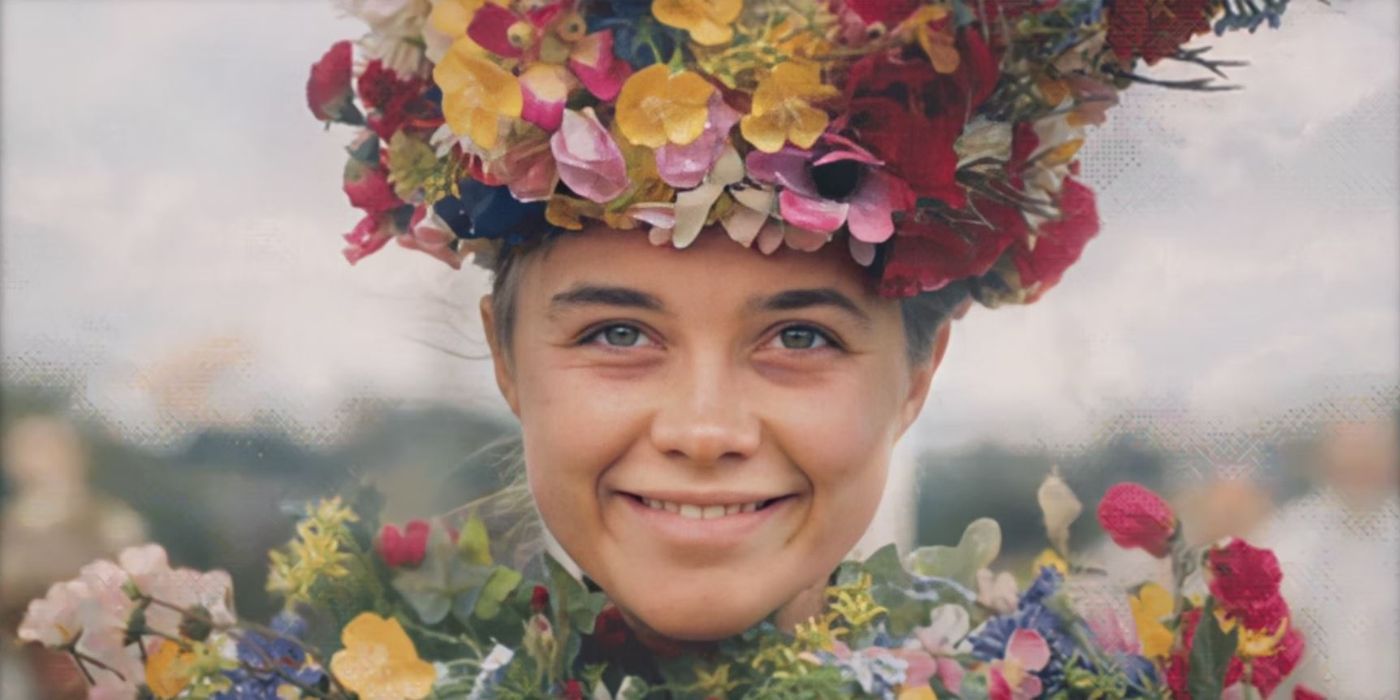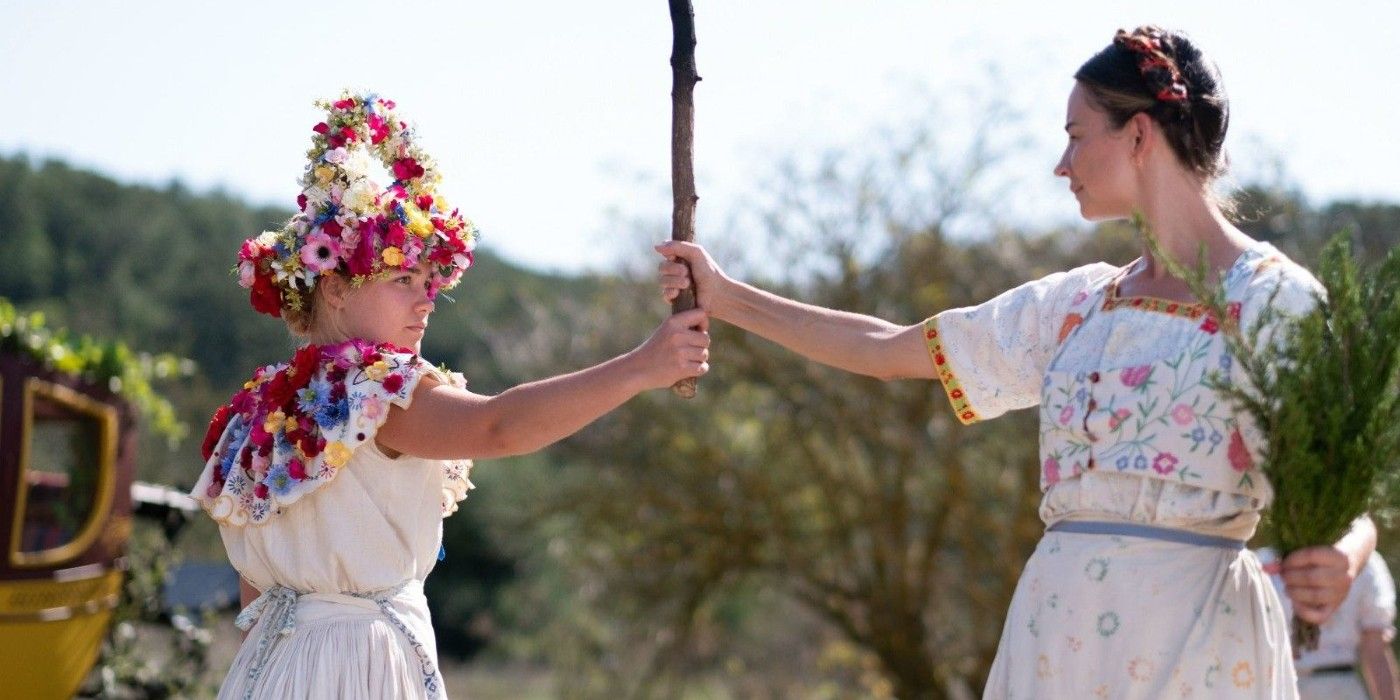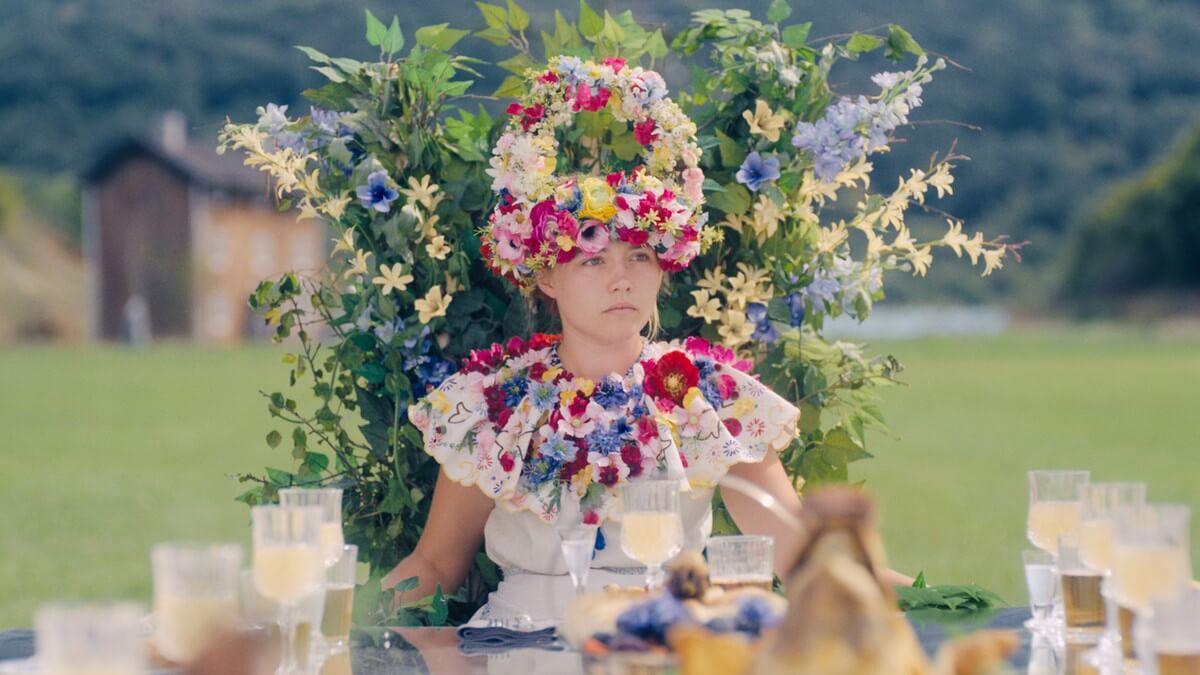Midsommar Explained: A Deep Dive Into The Mysteries Of Ari Aster's Masterpiece
Have you ever watched a movie so unsettling yet mesmerizing that it stays with you long after the credits roll? Well, "Midsommar" is exactly that—a cinematic experience that’s as haunting as it is breathtaking. Directed by Ari Aster, this psychological horror film dives deep into the world of Swedish folklore, blending stunning visuals with a spine-chilling narrative. Whether you’re a fan of horror films or just curious about what makes "Midsommar" so special, you’ve come to the right place.
When "Midsommar" first hit theaters in 2019, it sparked a wave of discussions among film enthusiasts. Unlike your typical horror flick filled with jump scares, this movie takes a more psychological approach, exploring themes of grief, relationships, and cultural rituals. It's not just about scaring the pants off you—it's about leaving you with a lingering sense of unease.
So, why should you care about "Midsommar"? Because it's more than just a movie; it's an experience. From its vibrant color palette to its eerie music, every element of the film is meticulously crafted to immerse you in the world of Hårga, the Swedish commune at the heart of the story. Stick around, and we'll break it all down for you in a way that’s easy to digest but packed with insights.
Read also:Kim Chiu Husband The Untold Story Of Love Life And Everything In Between
Table of Contents
- Midsommar Overview
- Plot Summary: What Happens in Midsommar?
- Meet the Characters
- Exploring Swedish Folklore in Midsommar
- Themes and Symbolism in Midsommar
- The Role of Music in Midsommar
- Cinematography: A Feast for the Eyes
- Critical Reception and Controversies
- Midsommar vs. Hereditary: A Tale of Two Films
- FAQ About Midsommar
Midsommar Overview
Let’s kick things off with a quick overview of "Midsommar." Directed by Ari Aster, the film follows Dani (Florence Pugh), a young woman struggling to cope with the recent loss of her family. Her boyfriend, Christian (Jack Reynor), invites her to join him and his friends on a trip to a remote Swedish village for their annual Midsummer festival. What starts as a cultural exchange quickly spirals into a nightmare as the group becomes entangled in the village’s dark rituals.
What makes "Midsommar" stand out is its unique take on the horror genre. Instead of relying on cheap scares, it builds tension through its characters' emotional struggles and the unsettling atmosphere created by the film's setting. The bright, sunlit backdrop contrasts sharply with the sinister events unfolding, making it all the more disturbing.
Why Midsommar Matters
Think about it—most horror movies happen in the dark, right? But "Midsommar" flips that expectation on its head by setting the entire story during the Swedish Midsummer celebration, where the sun never sets. This creates a sense of unease that lingers throughout the film, as the characters are constantly exposed to the commune’s strange customs and rituals.
Oh, and let’s not forget the stunning visuals. From the colorful costumes to the intricate set designs, every frame feels like a work of art. It’s no wonder "Midsommar" has been praised for its visual storytelling as much as its psychological depth.
Plot Summary: What Happens in Midsommar?
Alright, let’s dive into the plot. Spoilers ahead, obviously. The story begins with Dani dealing with the tragic loss of her family in a house fire. Her boyfriend, Christian, and their friends—Mark, Josh, and Pelle—are planning a trip to Sweden to attend Pelle’s village’s Midsummer festival. Despite their rocky relationship, Christian reluctantly invites Dani along, hoping the trip will help her heal.
Once they arrive in Hårga, the village where the festival takes place, things start to feel… off. The villagers are friendly but eerily distant, and their rituals seem more sinister than celebratory. Over the course of the festival, the group becomes increasingly entangled in the commune’s dark traditions, culminating in a shocking finale that leaves viewers questioning everything they thought they knew.
Read also:Funny Dark Jokes Laughter In The Shadows
Key Moments in the Plot
- The Ritual of the May Queen: One of the film’s most iconic scenes, where Dani is crowned the May Queen, symbolizing her transformation and acceptance into the commune.
- The Sacrifice Ceremony: A chilling moment where the group’s fate is sealed, showcasing the commune’s willingness to go to extreme lengths for their beliefs.
- The Final Scene: Spoiler alert—Dani’s smile at the end leaves audiences divided, with some seeing it as a moment of empowerment and others as a sign of her complete descent into madness.
Meet the Characters
No movie would be complete without its cast of characters, and "Midsommar" is no exception. Here’s a quick rundown of the main players:
Key Characters
- Dani (Florence Pugh): The protagonist of the story, Dani is a complex character grappling with grief and her failing relationship with Christian. Her journey from victim to queen is one of the film’s most compelling arcs.
- Christian (Jack Reynor): Dani’s boyfriend, Christian is portrayed as somewhat self-centered and emotionally distant. His decision to invite Dani on the trip sets the stage for the events that follow.
- Pelle (Vilhelm Blomgren): The enigmatic Swede who invites his friends to the festival, Pelle serves as the group’s guide into the world of Hårga.
Each character brings something unique to the table, contributing to the film’s rich tapestry of emotions and conflicts.
Exploring Swedish Folklore in Midsommar
At the heart of "Midsommar" lies Swedish folklore, a rich tradition that informs much of the film’s narrative. The Midsummer celebration, in particular, plays a central role, serving as both a backdrop and a catalyst for the story’s events.
Did you know that Midsummer is one of Sweden’s most important festivals? It’s a time when people gather to celebrate the longest day of the year, often marked by dancing, feasting, and traditional customs. In "Midsommar," however, these traditions take on a darker tone, reflecting the film’s exploration of the darker aspects of human nature.
Symbolism in the Film
From the towering Maypole to the intricate flower crowns, every element of the film’s design is steeped in symbolism. The Maypole, for example, represents fertility and renewal, while the flower crowns symbolize connection to nature. These symbols add layers of meaning to the story, inviting viewers to interpret them in their own way.
Themes and Symbolism in Midsommar
Let’s talk about the big ideas behind "Midsommar." At its core, the film explores themes of grief, relationships, and the human condition. Through Dani’s journey, we see how trauma can shape and transform us, often in unexpected ways.
Another key theme is the clash between modernity and tradition. The commune’s adherence to ancient customs highlights the tension between progress and preservation, raising questions about the cost of maintaining cultural heritage.
Unpacking the Symbolism
- The Sun: A recurring motif throughout the film, the sun represents both life and death, highlighting the duality of existence.
- The Flowers: Used extensively in the film’s visuals, flowers symbolize beauty, fragility, and the fleeting nature of life.
The Role of Music in Midsommar
Music plays a crucial role in setting the tone for "Midsommar." Composer Bobby Krlic’s haunting score perfectly complements the film’s visuals, creating an atmosphere of unease that lingers long after the credits roll.
One standout track is the choral piece sung during the sacrifice ceremony. Its haunting melodies and eerie harmonies perfectly capture the film’s blend of beauty and horror, leaving a lasting impression on viewers.
Cinematography: A Feast for the Eyes
When it comes to visuals, "Midsommar" is a masterpiece. Cinematographer Pawel Pogorzelski’s use of color and light transforms the film into a visual spectacle, with every frame feeling like a painting come to life.
But it’s not just about aesthetics. The film’s use of color symbolism adds depth to its storytelling, with bright yellows and greens representing life and growth, while darker hues hint at the underlying darkness.
Critical Reception and Controversies
Like any great film, "Midsommar" has sparked its fair share of debate. Critics praised its innovative approach to the horror genre, with many hailing it as a modern classic. However, not everyone was a fan. Some viewers found the pacing slow and the lack of jump scares frustrating.
Despite the mixed reactions, "Midsommar" has cemented its place in cinematic history, earning a cult following and inspiring countless discussions about its themes and symbolism.
Midsommar vs. Hereditary: A Tale of Two Films
For fans of Ari Aster’s work, comparing "Midsommar" to his debut film, "Hereditary," is inevitable. While both films explore themes of family and trauma, they do so in vastly different ways. "Hereditary" leans into the supernatural, while "Midsommar" focuses more on psychological horror.
Which one’s better? That depends on your tastes. If you prefer your horror served with a side of the supernatural, "Hereditary" might be your cup of tea. But if you’re into slow-burning tension and rich symbolism, "Midsommar" is the way to go.
FAQ About Midsommar
What inspired Ari Aster to make Midsommar?
Aster has cited his fascination with Swedish folklore and the concept of light versus darkness as key inspirations for the film. He wanted to create a horror movie that defied expectations by embracing the beauty of its setting.
Why does Dani smile at the end?
Interpretations vary, but many see Dani’s smile as a moment of empowerment, where she fully embraces her new role as the May Queen. Others view it as a sign of her complete descent into madness, leaving the ending open to interpretation.
And there you have it—a deep dive into the world of "Midsommar." Whether you’re a die-hard fan or just curious about what all the fuss is about, this film offers something for everyone. So, grab some popcorn, dim the lights, and prepare to be both mesmerized and unsettled.
Got questions or thoughts? Drop a comment below and let’s chat about it. And hey, if you enjoyed this article, don’t forget to share it with your friends. After all, who doesn’t love a good horror story?


